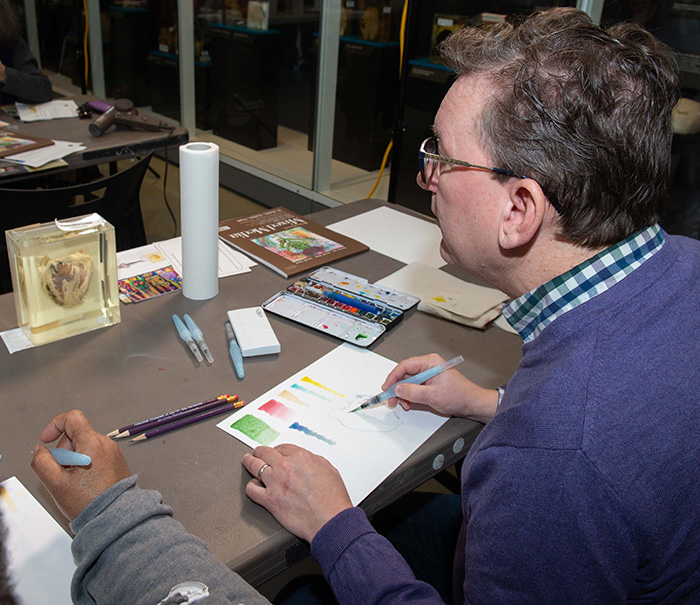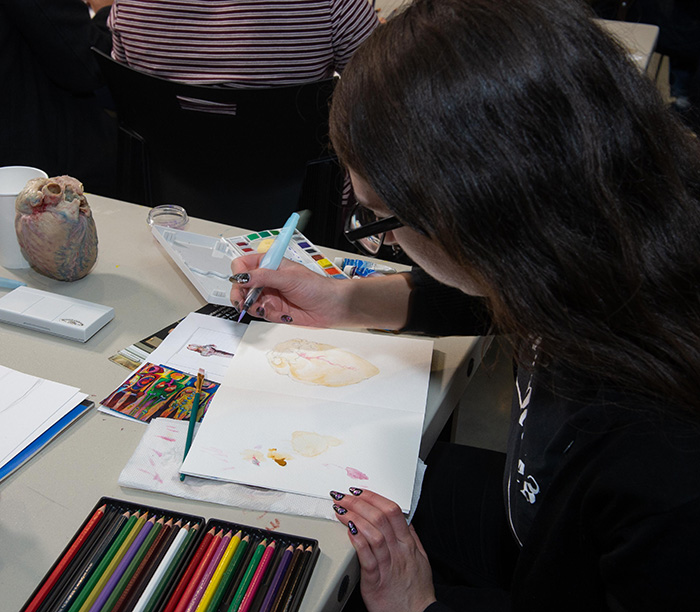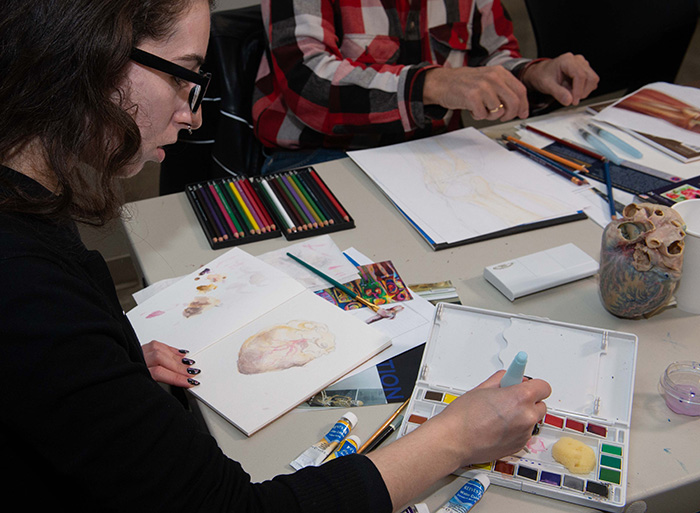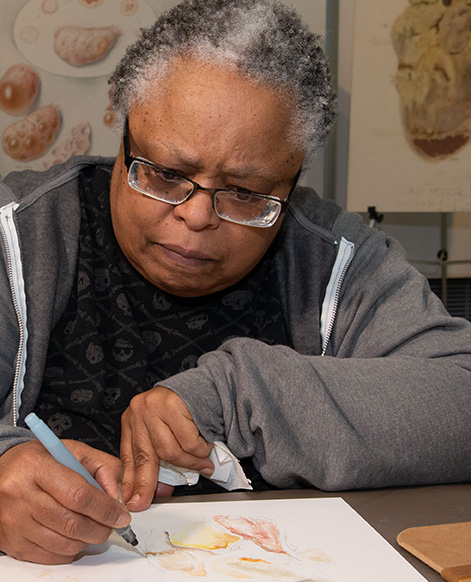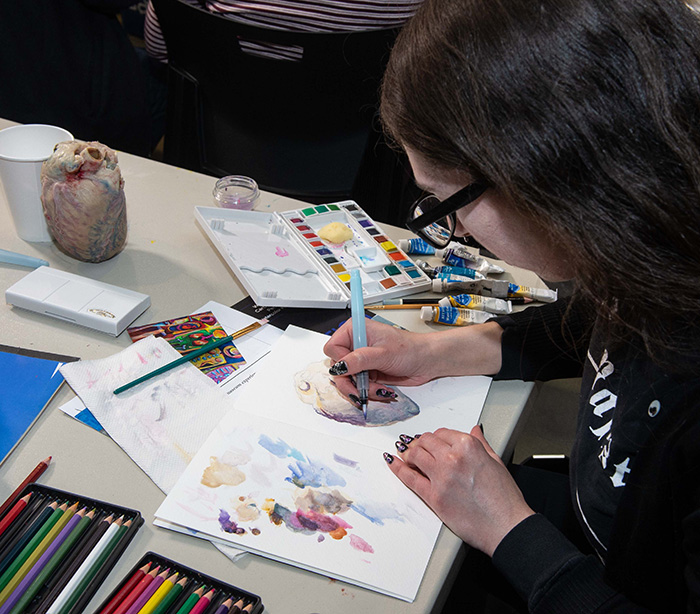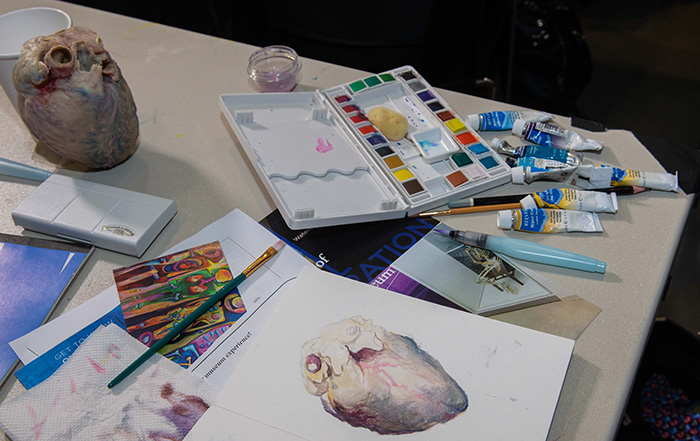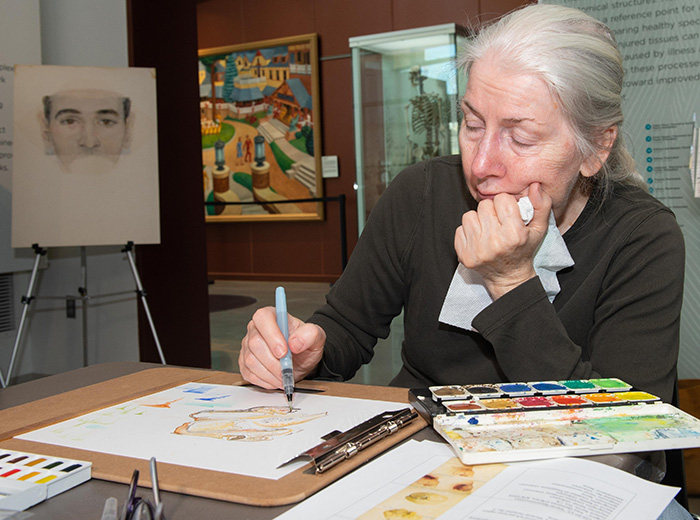Watercolor Medical Illustrations Make a Splash at the Medical Museum
By Jacqueline Gase
NMHM Public Affairs Coordinator
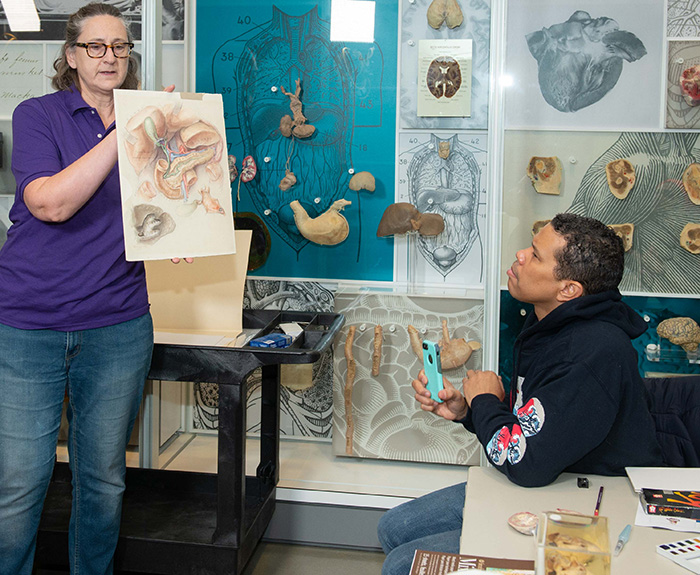
Elizabeth Lockett, National Museum of Health and Medicine (NMHM) collections manager and trained medical illustrator shows a museum visitor an original watercolor illustration of a gall bladder and other organs during the Feb. 9, 2019, Techniques of Medical Illustration: Watercolor program at NMHM in Silver Spring, Md. (National Museum of Health and Medicine photo by Matthew Breitbart/Released)
National Museum of Health and Medicine (NMHM) Collections Manager Elizabeth Lockett instructed visiting artists in watercolor medical illustration at NMHM's Feb. 9 Techniques of Medical Illustration program. Lockett, a trained medical illustrator, shared with participants the importance of medical illustration to the history of medical documentation, emphasizing the significant benefits of a handmade medium.
The long history of medical illustrations at NMHM started during the Civil War when the Army Medical Museum (predecessor of NMHM) Curator John Brinton hired two German watercolor artists to document battle trauma and document injuries and treatments. These classic illustrations appoint specific colors to parts of organs to differentiate the areas and "identify major anatomical features within the specimen," according to Lockett. In one example Lockett showed the audience, the gall bladder was painted green, aortas and oxygenated blood were red, and veins were blue.
The layering of colors gives depth and a life-like quality to the image of the specimen while communicating important information. "Unlike a photograph, a watercolor illustration can show translucency, opaqueness, and texture to get the point across, highlighting what makes the specimen important," Lockett explained. The illustration creates a visual narrative of the events that took place, reducing the complexity of the specimen to focus on the relevant focus of study.
Medical illustration is still in demand to help disseminate medical and biological information by clarifying the intricacies of anatomy. At NMHM, military and civilian doctors continue to refer to medical illustrations for research that advances medicine.
NMHM's Techniques of Medical Illustration programs provide forums for informal talks that connect the mission of the Department of Defense museum with the public. NMHM was founded as the Army Medical Museum in 1862 and is a division of the Defense Health Agency Research and Development Directorate. For more information about upcoming events, call (301) 319-3303 or visit https://www.medicalmuseum.mil.
